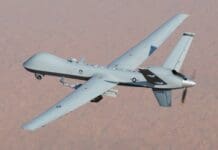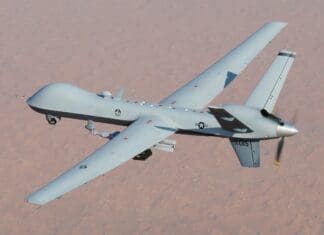
This post is also available in:
 עברית (Hebrew)
עברית (Hebrew)
Latest social media has shown what is reportedly Russia’s Okhotnik, or Hunter – an unmanned combat vehicle (UCAV). The aircraft has been in development for years in one form or another, with Russian aircraft design house Sukhoi leading-up the project.
The craft looks large and with a hardy landing gear that looks similar to those used on modern Russian tactical jet designs. The configuration appears to be loosely similar to something between Northrop Grumman’s X-47B and Boeing’s X-45C Phantom Ray, as well as other international UCAV designs, according to thedrive.com.
“Next year, the Okhotnik will enter trials. The work on this project is a priority and it is proceeding at a good level. In the spring, we are expecting the first flight of this drone,” aבcording to Russia’s Deputy Defense Minister Alexei Krivoruchko.
In November 2018, An unnamed Russian ministry source had also told state-run news outlet TASS that the Okhotnik prototype had completed its first ground tests, including taxying and a takeoff run, at the Novosibirsk Aircraft Production Association’s plant, which support’s Sukhoi’s research and development programs and actual aircraft production. Though it reportedly reached a speed of more than 120 miles per hour, the UCAV did not actually take off. The anonymous individual also said that the unmanned aircraft had accelerated down the runway and then slowed to a stop in a “fully automated mode.”
The general weather conditions in the picture would match with the reports from Novosibirsk in November 2018, suggesting that this picture could be from those ground tests.
In addition, in recent days, one of Russia’s handful of Su-57s has emerged wearing unique markings showing the shape of a UCAV flying alongside the shape of Su-57 with a lightning bolt between the two. The bolt is universally used to show electronic connectivity and data sharing.
A number of aerials are also new to the Su-57 in question, which would be used for data-linking between it and the Okhotnik. The manned aircraft could potentially forward that information to testers on the ground.
Making the mission of this particular Su-57 even clearer, a shot of the aircraft from the bottom shows its digital paint scheme resembles the shape of a stealthy UCAV. The jet could be acting as a surrogate testbed for certain technologies that will go into the Okhotnik, as well.

























